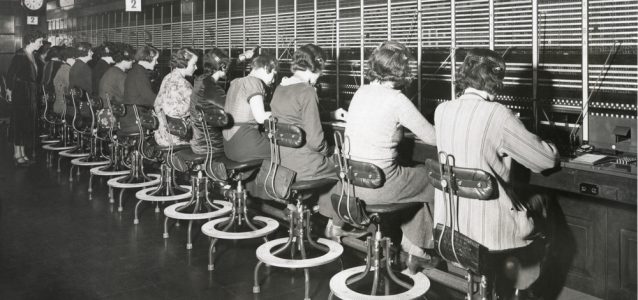What Is An Answering Service?
Let’s start with a basic review, what is an answering service? An answering service is a communication solution utilized by businesses to manage incoming calls from customers, clients, or other stakeholders. It involves outsourcing the task of handling phone calls to a specialized service provider. When callers contact the business, the answering service’s operators or automated systems take the calls, greet the callers professionally, and collect relevant information or messages as per the business’s instructions. Depending on the nature of the business and its preferences, the answering service may forward urgent calls to designated personnel or handle routine inquiries through pre-set scripts or interactive voice response (IVR) systems. Some answering services are available 24/7, others are activated after hours or during holidays, some are based in the US, and some are located off-shore in other countries. Some answering services have extended capabilities, such as bilingual live agents, appointment scheduling, or the ability to handle chat and social media direct messaging. The one thing that all answering services have in common is their primary function: to handle and manage incoming phone calls on behalf of businesses.History of Answering Services
The history of answering services dates back to the early 20th century when businesses started to realize the need for professional call handling and message management. Let’s take a journey through the key milestones in the evolution of answering services:Early Telephone Receptionists (1900s-1920s):
As telephone communication became more prevalent, businesses recognized the importance of having a person to handle incoming calls and route them to the appropriate parties. Early telephone receptionists or operators manually connected calls using switchboards and provided basic message-taking services.Call Centers and Message Relay (1930s-1950s):
With the rise of larger companies and increased call volumes, centralized call centers emerged. These centers employed operators who manually connected calls using switchboards and relayed messages to the intended recipients. Companies often had in-house call centers to handle their internal and external communications.Introduction of Answering Machines (1960s):
The invention of answering machines in the 1960s revolutionized the way messages were handled. Answering machines allowed callers to leave voice messages when nobody was available to answer the phone. This technology enabled businesses to capture messages accurately and ensured that important information was not missed.Live Operator Answering Services (1970s-1980s):
As businesses sought to provide a more personalized touch to their customer service, live operator answering services gained popularity. These services employed trained operators who answered calls on behalf of client companies, using scripts and protocols provided by the clients. Operators took messages, provided basic information, and forwarded calls as necessary.Technological Advancements (1990s-2000s):
With the advancement of technology, answering services began utilizing computer-based systems and software to streamline call handling processes. Call routing systems, IVR (Interactive Voice Response), and CRM (Customer Relationship Management) integration became standard features, allowing for more efficient call management and personalized customer interactions.Virtual Answering Services (2000s-Present):
The advent of virtual answering services further transformed the industry. Today, answering services can operate remotely, often leveraging internet-based communication technologies. Virtual answering services offer flexibility, scalability, and cost-effectiveness, making them appealing to businesses of all sizes. They can handle calls from multiple clients simultaneously and provide services such as appointment scheduling, order taking, and customer support. Answering services continue to evolve, incorporating AI-powered chatbots and automation to enhance efficiency and provide round-the-clock support. They have become an essential part of many businesses, ensuring excellent customer service, efficient call management, and seamless communication.The Answering Service Industry Today
The answering service industry today continues evolving to meet the changing needs of businesses and their customers, and leverage the latest technological advancements for improved insights and efficiency. Here are some key trends and aspects of the answering service industry:- Technological Advancements: Advancements in technology have changed the answering service industry. Call management systems, automated messaging, and sophisticated software platforms enable more efficient call handling and call routing. Integration with customer relationship management (CRM) systems and other business tools enhances productivity and data management.
- Virtual and Remote Solutions: The rise of virtual and remote work has influenced the answering service industry. According to Forbes, as of 2023, 12.7% of full-time employees work from home, while 28.2% work a hybrid model. Many answering service providers now operate with virtual call centers, allowing operators to work remotely, providing greater flexibility and cost-efficiency. Virtual solutions ensure uninterrupted service, scalability, and broader geographic coverage.
- Specialized Industry Expertise: Answering service providers often specialize in serving specific industries, such as healthcare, legal, or real estate. This specialization allows for a deep understanding of industry-specific requirements, compliance regulations, and terminology, enabling more effective and tailored support for businesses within those sectors.
- Analytics and Reporting: Advanced reporting and analytics capabilities have become integral to the answering service industry. Answering service analytics is the process of collecting and analyzing call center data to improve customer experience, agent performance, customer service, and operational efficiency. Businesses can access detailed call data, metrics, and insights, allowing them to monitor performance, identify trends, and make data-driven decisions to optimize their customer service strategies.


 Receive Your Free Consultation
Receive Your Free Consultation